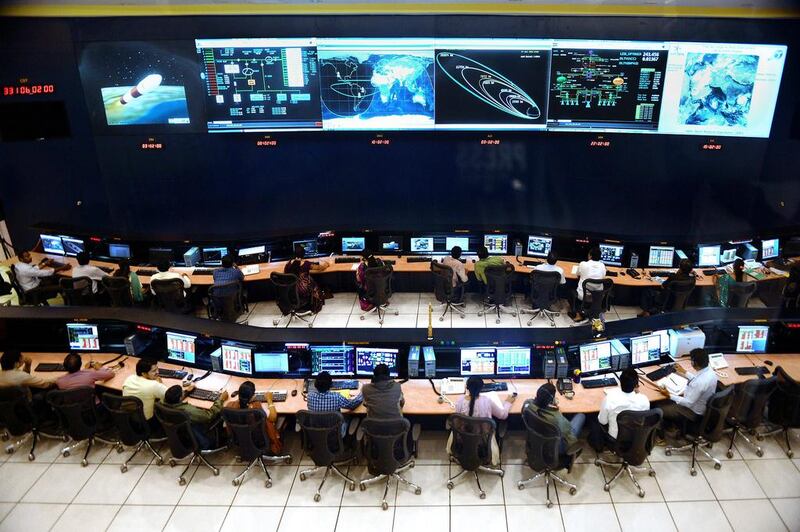Reuters
India’s first mission to Mars left Earth’s orbit in the early hours of yesterday, clearing a critical hurdle in its journey to the red planet and overtaking the recent efforts of rival Asian giant China.
The success of the spacecraft, scheduled to orbit Mars by September, would carry India into a small club of nations including the United States, Europe, and Russia, whose probes have orbited or landed on Mars.
India’s venture, called Mangalyaan, faces further hurdles still on its journey to Mars. Fewer than half of missions to the planet succeed.
“While Mangalyaan takes 1.2 billion dreams to Mars, we wish you sweet dreams,” India’s space agency said in a tweet soon after the event, referring to the citizens of the world’s second-most populous country.
China’s Mars probe rode piggyback on a Russian spacecraft that failed to leave Earth’s orbit in November 2011. The spacecraft disintegrated in the atmosphere and its fragments fell into the Pacific Ocean last year.
India’s mission showcases the country’s cheap technology, encouraging hopes it could capture more of the US$304 billion global space market, which includes launching satellites for other countries, analysts say.
“Given its cost-effective technology, India is attractive,” said Rajeswari Pillai Rajagopalan, an expert on space security at the Observer Research Foundation think-tank in Delhi.
India’s low-cost Mars mission has a price tag of 4.5 billion rupees (Dh268m), just over a tenth of the cost of Nasa’s latest mission there, which launched on November 18.
Homegrown companies – including India’s largest infrastructure group Larsen & Toubro, one of its biggest conglomerates, Godrej & Boyce, the state-owned aircraft maker Hindustan Aeronautics and Walchand Nagar Industries – made more than two-thirds of the parts for both the probe and the rocket that launched it on November 5.
The India probe completed six orbits around Earth before yesterday’s “slingshot”, which took it into a path around the sun to carry it towards Mars.
“Getting to Mars is a big achievement,” said Mayank Vahia, a professor in the astronomy and astrophysics department of the Tata Institute of Fundamental Research in Mumbai.
“If the spacecraft is half a degree out in its direction, or if the velocity is a few kilometres too fast or slow, the slingshot will not work.”
The mission’s next challenge will be to enter an orbit around Mars next year, a test failed in 2003 by Japan’s probe, which had electrical trouble as it neared the planet.
“You have to slow the spacecraft down once it gets close to Mars, to catch the orbit, but you can’t wait until Mars is in the field of view to do it - that’s too late,” Mr Vahia said.
The Mars probe plans to study the planet’s surface and mineral composition as well as search the atmosphere for methane, a chemical strongly tied to life on Earth.





